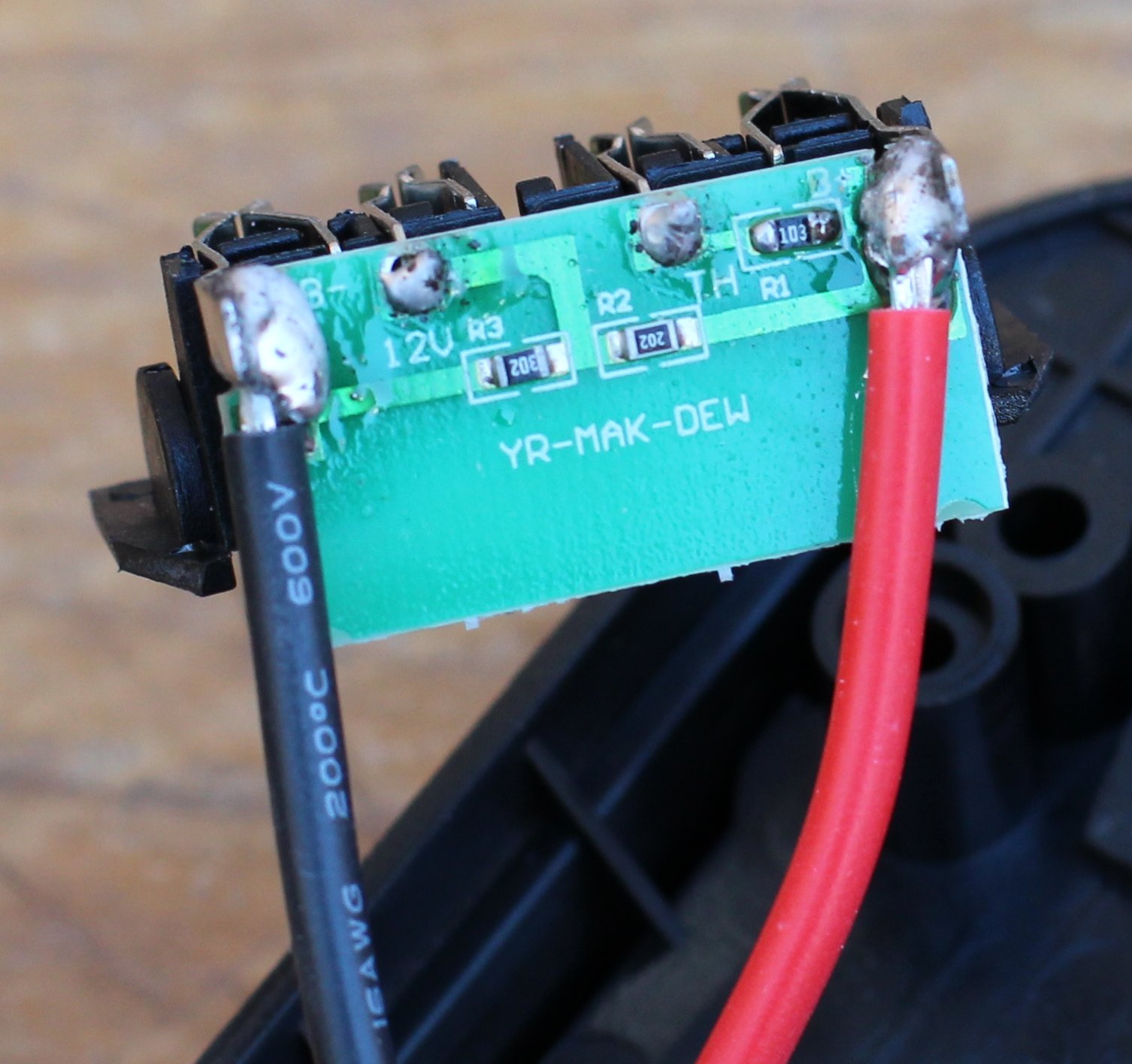
Older Revision of DeWALT 20V MAX Power Tools Battery Interface
DeWALT 20V MAX Power Tools Battery InterfaceThe DeWALT 20V MAX power tool uses 20-volt lithium ion (Li-Ion) battery packs. The battery packs contains five 3.6v lithium ion power cells that provides 18v and peaks at 20v when charged. DeWALT 20V MAX Battery Pin-Out
Note that as reported in "DeWalt 20V Max 3.0Ah Battery Pack Teardown & Analysis" (see "Related Links" section below), "The battery is always connected to the terminals. There is no way that the BMS can cut off current if the pack voltage is low. It's up to the tool to determine the cutoff point and refuse to work below that." DeWALT 20V MAX Power Tool Pin-OutIn order to figure out how the tool operates with the battery, we ripped up a piece of paper to cover the two middle pins. We determined that the DeWALT 20V MAX power tools will not operate without either or both of the middle pin.
Cross-Reference
So if you want to interface to the DeWALT 20V MAX power tool with other battery source, you'll have to fake out the two middle pins. The question is how to fake it out? Inside of a Battery AdapterTo answer this question, we purchased the Milwaukee M18 RedLithium Battery Pack to DeWALT 20V MAX Power Tool Adapter on Amazon. Then we took it apart to see what's inside. Inside the adapter, there is a very simple surface-mount circuit board (see photo below). It consists of three surface-mount resistors--103, 202, and 302--that ties the power and ground to the two inner pins. 
Using the Online calculator - 3 digit SMD resistor, we determine that the resistors values are as follows:
Note that the adapter uses 16 gauge wires (see photo above). So if you are to wire up your own battery source, you'll probably want to use 16 gauge wires as the minimum thickness. Related Links
|
Articles
|
Wiki
223 Users Online
|
|
Copyright © 2004 - 2025. All Rights Reserved. |